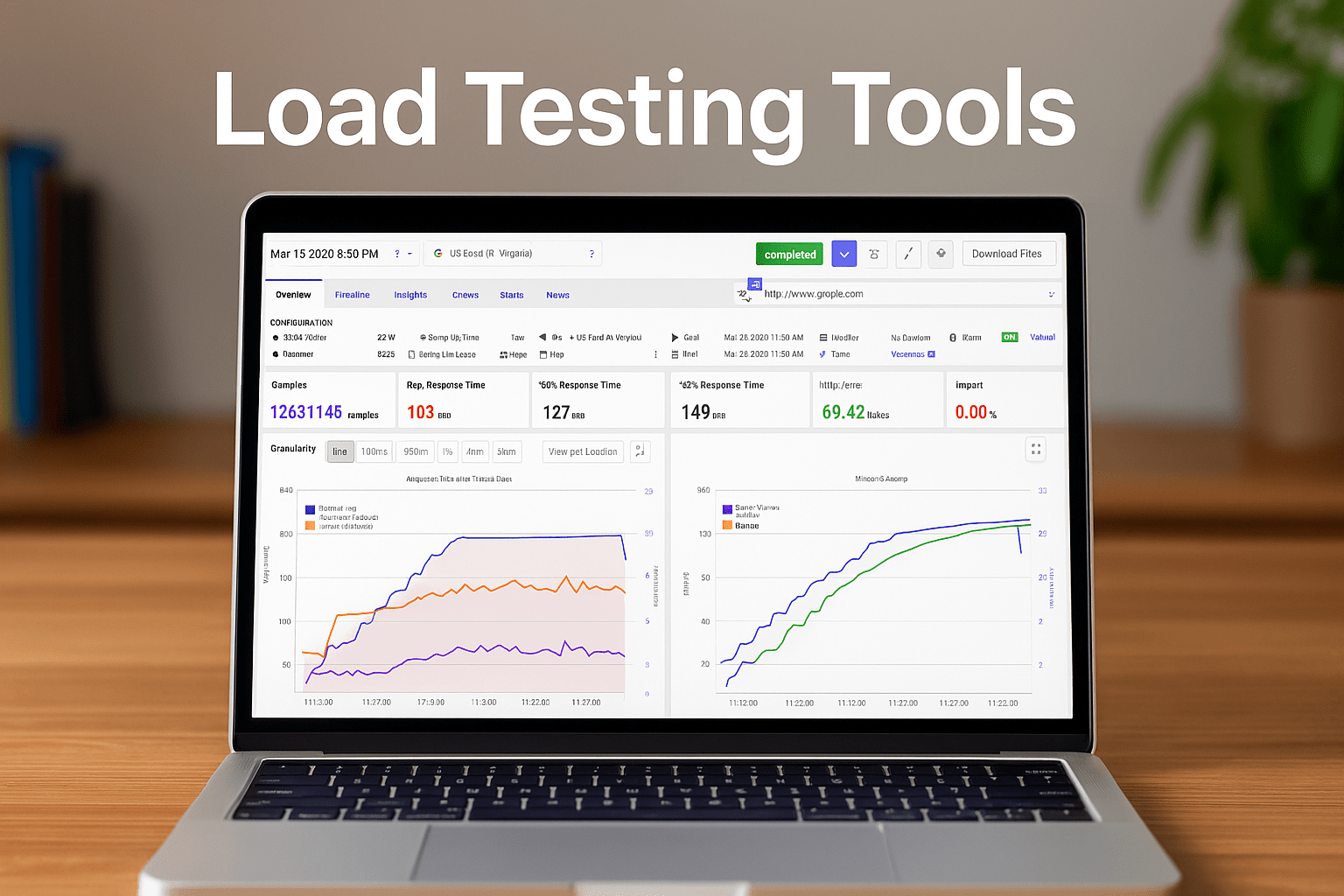Penetration testing remains a critical part of cybersecurity, with businesses increasingly investing in vulnerability assessments and red team exercises. Recent trends indicate that cybersecurity budgets are growing by an average of 15% annually, and engagements for penetration tests have surged by nearly 25% over the past year. In this article, we explore the top 5 penetration testing tools expected to dominate 2025, including an innovative solution that integrates performance evaluation and security insights.
Comparative Summary of Penetration Testing Tools
| Tool | Best For | Key Features | Use Case |
|---|---|---|---|
| LoadFocus Security Suite | Integrated performance & vulnerability testing | Combines load testing with advanced vulnerability scanning and API monitoring capabilities | Organizations seeking to merge performance and security assessments |
| Burp Suite Professional | Web application vulnerability assessment | Comprehensive scanning, intruder, repeater, and session handling | Large-scale web application security testing |
| Metasploit Framework | Exploit development and vulnerability validation | Extensive exploit database, payload generation, automation scripts | Advanced penetration tests and red teaming |
| Nmap | Network discovery and security auditing | Host discovery, port scanning, service fingerprinting | Network mapping and vulnerability identification |
| Kali Linux | Comprehensive penetration testing environment | Pre-installed suite of security tools, frequent updates, community support | End-to-end security assessments and training |
The 5 Best Penetration Testing Tools for 2025
1. LoadFocus Security Suite
Category: Integrated Performance & Vulnerability Testing
Is Your Infrastructure Ready for Global Traffic Spikes?
Unexpected load surges can disrupt your services. With LoadFocus’s cutting-edge Load Testing solutions, simulate real-world traffic from multiple global locations in a single test. Our advanced engine dynamically upscales and downscales virtual users in real time, delivering comprehensive reports that empower you to identify and resolve performance bottlenecks before they affect your users.
Overview:
While traditionally known for its performance solutions, the innovative LoadFocus Security Suite now offers integrated penetration testing features. It leverages its robust load testing and website speed test capabilities to simulate real-world conditions, helping identify security vulnerabilities under stress. Its seamless API monitoring and free load test options provide extra value, making it a top choice for organizations looking to merge performance evaluation with security testing.
Key Features:
- Integrated performance and vulnerability analysis
- Real-time synthetic monitoring
- Customizable test scenarios and reporting tools
- Easy-to-use dashboards and alerts
Pros:
Think your website can handle a traffic spike?
Fair enough, but why leave it to chance? Uncover your website’s true limits with LoadFocus’s cloud-based Load Testing for Web Apps, Websites, and APIs. Avoid the risk of costly downtimes and missed opportunities—find out before your users do!
- Combines performance insights with security assessments
- Intuitive interface with detailed reporting
- Scalable for both small and large enterprises
Cons:
- New on the market as a penetration testing option; may require training
- Integration of dual functionalities can increase complexity
Use Case:
Ideal for organizations that want to evaluate both the security and performance of their applications simultaneously.
Pricing:
Subscription-based with tiered plans to suit varying business needs.
2. Burp Suite Professional
Category: Web Application Vulnerability Assessment
LoadFocus is an all-in-one Cloud Testing Platform for Websites and APIs for Load Testing, Apache JMeter Load Testing, Page Speed Monitoring and API Monitoring!
Overview:
Burp Suite Professional is renowned for its powerful web vulnerability scanning and is widely used by security professionals worldwide. It offers a comprehensive suite of tools including an intercepting proxy, scanner, and intruder to find and exploit vulnerabilities in web applications.
Key Features:
- Automated vulnerability scanning
- Manual testing tools with detailed analysis
- Session handling and repeatable testing
- Integration with other security tools
Pros:
- Industry-standard tool with robust community support
- Regularly updated with new features
- Highly customizable testing configurations
Cons:
- Can be resource-intensive
- Licensing cost may be high for smaller organizations
Use Case:
Best suited for enterprises focused on securing their web applications and APIs.
Pricing:
Commercial licensing with a free community edition available.
3. Metasploit Framework
Category: Exploit Development and Vulnerability Validation
Overview:
Metasploit Framework is a widely used open-source tool that provides security professionals with a platform to develop and execute exploit code against remote targets. Its extensive library of exploits and payloads makes it an essential tool in any pentester’s toolkit.
Key Features:
- Extensive exploit database
- Automation of exploit testing
- Payload generation and encoding
- Integration with other security tools
Pros:
- Open-source and highly extensible
- Strong community support and documentation
- Ideal for learning and advanced penetration testing
Cons:
- Requires a steep learning curve for beginners
- Not ideal for quick, out-of-the-box testing
Use Case:
Essential for advanced penetration tests, red team operations, and exploit development.
Pricing:
Free and open-source with premium support options available.
4. Nmap
Category: Network Discovery and Security Auditing
Overview:
Nmap (Network Mapper) is a free and open-source tool for network exploration and security auditing. It is used to discover hosts, services, and potential vulnerabilities on a network, making it a staple in both network administration and security testing.
Key Features:
- Host discovery and port scanning
- Service and operating system detection
- Scripting engine for advanced vulnerability detection
- Fast and efficient scanning capabilities
Pros:
- Highly reliable and widely adopted
- Flexible with numerous scan types
- Extensive documentation and community support
Cons:
- Command-line interface may intimidate beginners
- Limited GUI options compared to commercial tools
Use Case:
Perfect for initial reconnaissance and network mapping during a penetration test.
Pricing:
Free and open-source.
5. Kali Linux
Category: Comprehensive Penetration Testing Environment
Overview:
Kali Linux is a Debian-based distribution designed for digital forensics and penetration testing. It comes preloaded with hundreds of security tools, making it an excellent one-stop solution for both beginners and experienced pentesters.
Key Features:
- Extensive suite of pre-installed security tools
- Regular updates and active community support
- Customizable and adaptable for various testing scenarios
- Robust documentation and training resources
Pros:
- All-in-one platform for penetration testing
- Open-source and freely available
- Highly versatile for various security testing needs
Cons:
- Requires familiarity with Linux
- Can be overwhelming for beginners due to the sheer number of tools
Use Case:
Ideal for comprehensive security assessments, learning environments, and professional penetration testing engagements.
Pricing:
Free and open-source.
FAQs
Is pentesting a hard job?
Penetration testing can be challenging due to the continuous evolution of attack methods, the need for up-to-date technical knowledge, and the pressure of simulating real-world attacks. However, many professionals find it rewarding and intellectually stimulating.
What is a pen tester’s salary?
Salaries for penetration testers vary widely depending on experience, location, and industry. In the United States, entry-level positions might start around $70,000 annually, while experienced professionals can earn upwards of $150,000 per year.
Is Python enough for pentesting?
Python is an excellent language for developing scripts and automating tasks in penetration testing. While it is a powerful tool in a pentester’s toolkit, having a working knowledge of other languages (such as Bash or Ruby) and networking protocols is also beneficial.
What is the average salary for PenTest?
On average, penetration testers in the U.S. earn roughly $100,000 per year. This figure can vary based on the complexity of the job, the industry, and regional factors.
Does pentesting require coding?
Yes, coding is often a crucial part of penetration testing. Although not every task requires deep programming skills, familiarity with scripting languages (like Python) and understanding code is essential for automating tests and customizing exploits.
Do you need math for pentesting?
While advanced mathematics is rarely necessary, a solid grasp of basic arithmetic and logical reasoning is important. The emphasis is more on understanding network protocols, system architecture, and coding rather than complex math.





